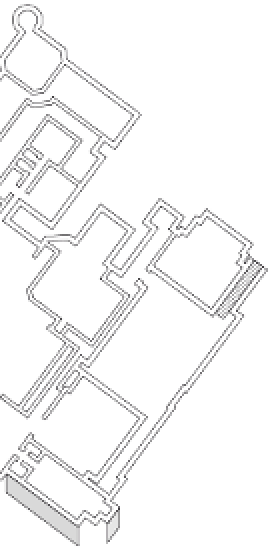Travel Reference
In-Depth Information
Hall of Biodiversity
Opened in 1998 to encourage conserva-
tion, the hall contains a rainforest with accurate
sounds, plants, and inhabitants. The 100-ft (30-m)
long Spectrum of Life wall displays 1,500
specimens from bacteria to
mammals, as well as a giant squid
overhead.
1
Hall of Asian Peoples
Exquisite artifacts, artwork, costumes,
and dioramas of daily life show the different
religions and lifestyles of Chinese, Korean,
Indian, and other Asian cultures.
2
Hall of African Peoples
These depictions of tribes living
in various environments reflect 100
years of research. The displays
include dwellings, clothing, masks,
textiles, weapons, and tools.
Third Floor in-
cludes the Hayden
Planetarium
(see pp37)
.
6
Meteorites, Minerals,
and Gems
Wonders include the 563-carat
Star of India, a 596-lb (270-kg)
topaz crystal from Brazil, and the
Cape York meteorite, 4.5 billion
years old and weighing 34 tons.
Northwest Coast Indians
This area features Native American totem poles showing the
woodworking skills of tribes living from Washington state to south-
ern Alaska. Also on show is a 63-ft (19-m) Haida canoe built in 1878.
Human Biology
and Evolution
This display of human
origins and physical
characteristics includes
reconstructed heads of
early hominids that
bring you face to face
with your predecessors.
Museum Guide
Enter from Central Park
West onto the 2nd floor
to view the Barosaurus
exhibit, and African,
Asian, and Central and
South American peoples
and animals. The Hall of
Biodiversity, ocean life,
and minerals and gems
are on the 1st floor. North
American Indians, birds,
and reptiles are on the
3rd floor, and dinosaurs
and fossils on the 4th.
Birds of the World
The museum has the world's largest collection
of birds - more than a million specimens. The
collection is organized geographically, with
separate halls displaying dioramas of oceanic,
North American, and other birds of the world.
35









































































